What We Owe the Victorians
It’s odd for us to consider now, but until the 19th century the novel was considered by most to be a creation which was, at the very least, a waste of one’s time, and by many, an evil invention. The reasoning behind this aversion to fiction was that because the stories did not really occur, they were a form of “lying.” It is likely that this mindset arose from the attitudes of some of our more extreme Puritan forefathers; this view was also most likely further confirmed by some of the rather scandalous early novels published pre-19th century.
Whatever the reason or reasons, it took the genius of the Victorian novelists to give the world the epiphany that a well crafted novel is truth with a capital “T.” Like the rich metaphorical literature of The Old Testament, the parables of Jesus, allegories such as Pilgrim’s Progress, and the symbolic nature of poetry, novels reveal truths to us about the world, human nature, and ultimately, ourselves, in fresh new ways which connect with the soul and spirit through “real” story. So thank you Charles Dickens, The Brontës, George Eliot, Robert Louis Stevenson, Mary Shelley, Elizabeth Gaskell, Joseph Conrad, Mark Twain, and the many, many others who broke through the veil and brought us the gift of the novel.
The World’s Most Famous Diary: Robinson Crusoe, the First Novel
The first novel, Robinson Crusoe, written by Daniel Defoe in Britain, was published in 1719 and next to the Bible is the most published book in history. It was inspired by the life of a Scottish man, Alexander Selkirk, an officer in the British navy who was 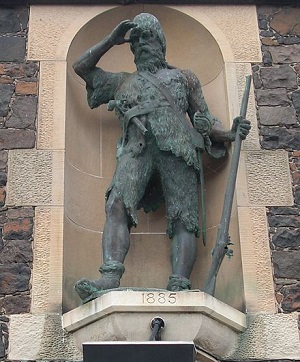 shipwrecked on an island in the South Pacific by his captain and survived there for about a year and a half before being rescued by pirates. (You can find a statue of him in Fife, Scotland.) He was incorrigible and probably did not have the redemptive experience which the fictional Robinson Crusoe has.
shipwrecked on an island in the South Pacific by his captain and survived there for about a year and a half before being rescued by pirates. (You can find a statue of him in Fife, Scotland.) He was incorrigible and probably did not have the redemptive experience which the fictional Robinson Crusoe has.
The novel is composed in the form of a journal wherein Crusoe recounts in detail how he survives and is converted to a holy Christian life through his reading of the copy of the Bible he has found in the shipwreck, and eventually meets his friend Friday. It seems to me that this revelatory tale of one man’s conversion to faith may be the template for the religious tradition which blossomed forth later on of the personal “testimony,” where church members (usually protestant) stand up and confess the details of how they came to faith. As far as I know, this tradition is peculiarly British and American, which is why I ponder this possibility. The novel is also rife with allusions to biblical stories and topics, keeping continuity with the trajectory of previous English language works.
Robinson Crusoe shifted the trajectory for how a myriad of great authors would write. It affected the future of our cultural understanding of what it means to be an individual, and stands in line with the great Western works which have taken us from classical 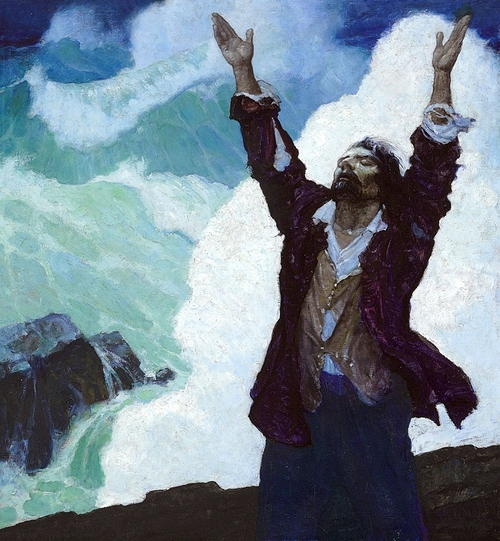 times when individuals and their stories were viewed primarily as a part of the group, a cog in the wheel of their culture, to a time when each person as seenias “a world in himself” to be investigated, understood, and affirmed.
times when individuals and their stories were viewed primarily as a part of the group, a cog in the wheel of their culture, to a time when each person as seenias “a world in himself” to be investigated, understood, and affirmed.
While it is true that the story is rather long-winded, given the fact that Defoe was inventing an entirely “novel” genre of literature the book is astounding. The first person narrative by Robinson himself gives a personal tone to the story which works well in concert with the major theme of the work, which is that of Crusoe’s slow repentance from a corrupt life to that of a holy and prayerful Christian. The tale imagines what it would be like to be stranded with no distractions and nothing except a few items, completely alone with only oneself and God.
The highly personal nature of this first novel and its deep dive into the state of the protagonist’s soul set the stage for novels to follow: they would be stories about 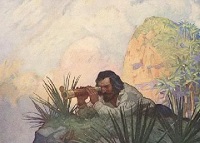 individuals, but these would reach beyond the particular characters, expanding the meaning of their experiences to exemplify instances of the universal themes of life and morality as worked out in the lives of people and the society surrounding them. Defoe’s choice of the “journal” as his vehicle for telling the tale also set the stage for what became known as the epistolary novel, which would consist of a series of either letters or journal entries, commonly interspersed with narration by the letter writer, or possibly, by another narrator who is telling that person’s story.
individuals, but these would reach beyond the particular characters, expanding the meaning of their experiences to exemplify instances of the universal themes of life and morality as worked out in the lives of people and the society surrounding them. Defoe’s choice of the “journal” as his vehicle for telling the tale also set the stage for what became known as the epistolary novel, which would consist of a series of either letters or journal entries, commonly interspersed with narration by the letter writer, or possibly, by another narrator who is telling that person’s story.
The possibilities are endless: a narrator might “discover” the letters of a person from another era in an old attic, or might by chance find the diary of a person whose story otherwise would not have been known, or known as it truly happened. A recent renaissance of the epistolary novel has included elements such as time travel, parallel worlds, and other innovative tropes. Thanks to the ingenious mind of Daniel Defoe the novel lives on, always new, rebirthed and reimagined by countless writers who entertain and inspire us with their innovative characters and stories.
Works Cited:
http://www.britannica.com
A Controversial Bird:
Thoughts on To Kill a Mockingbird
I’m sure you are aware of the classic American novel, To Kill a Mockingbird, by Harper Lee. What you may not yet know is that recently this important book has been banned in quite a few schools 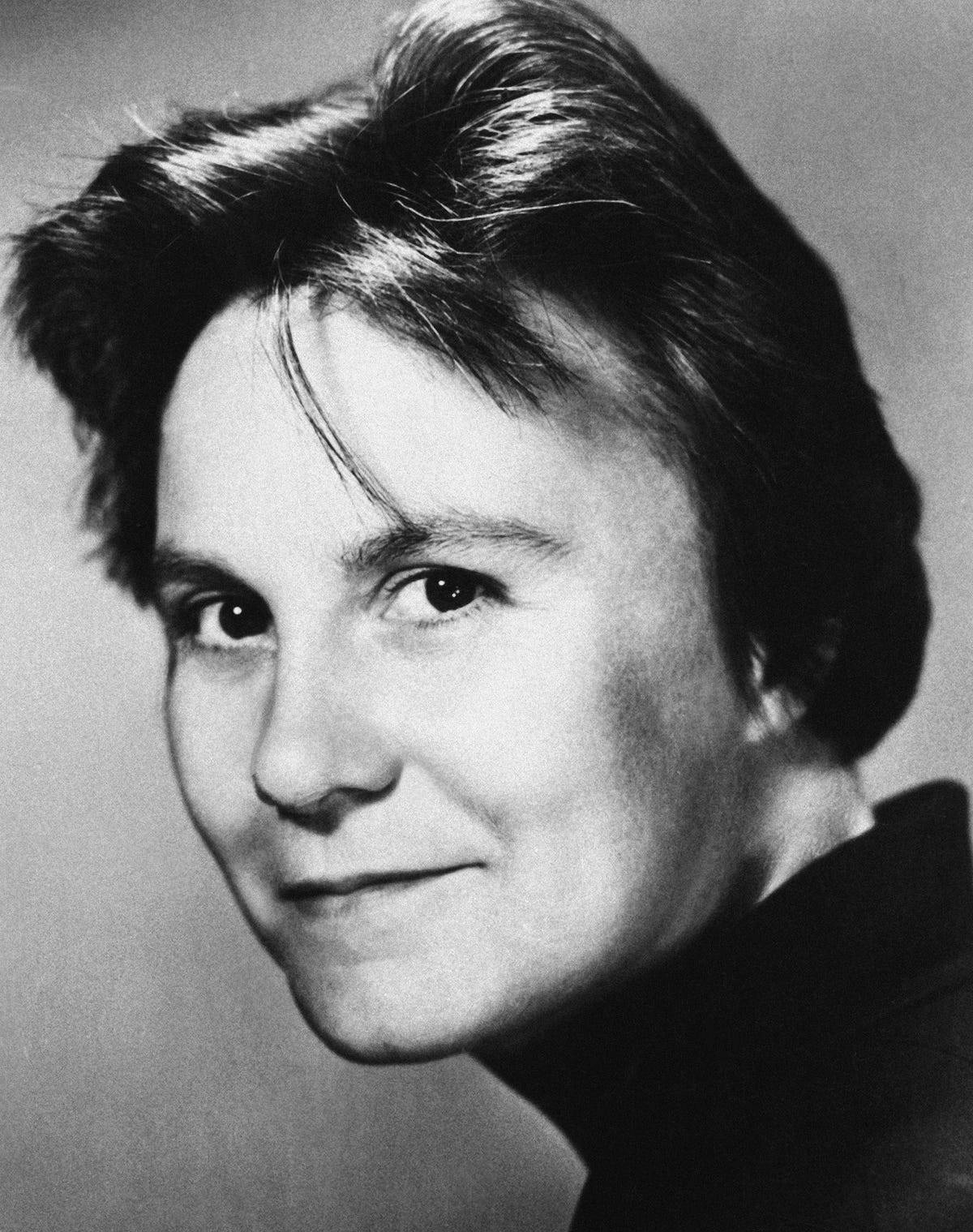 and school districts because, like Huckleberry Finn, it contains characters who use an extremely offensive racial epithet. But that’s not what this article is about: I want to talk about other aspects of the book that parents of younger students may not know about which make it inappropriate for younger students to study, no matter what your views on the banning of books.
and school districts because, like Huckleberry Finn, it contains characters who use an extremely offensive racial epithet. But that’s not what this article is about: I want to talk about other aspects of the book that parents of younger students may not know about which make it inappropriate for younger students to study, no matter what your views on the banning of books.
Some home school programs, including online, require early middle school students to read this book: I know because I was required to teach it at this grade level. Over those years I developed the strong opinion that this book should not be taught until at the very youngest, the 9th grade. People think of the book as having the theme of the evils of racism, and while this is true, the plot revolves around the 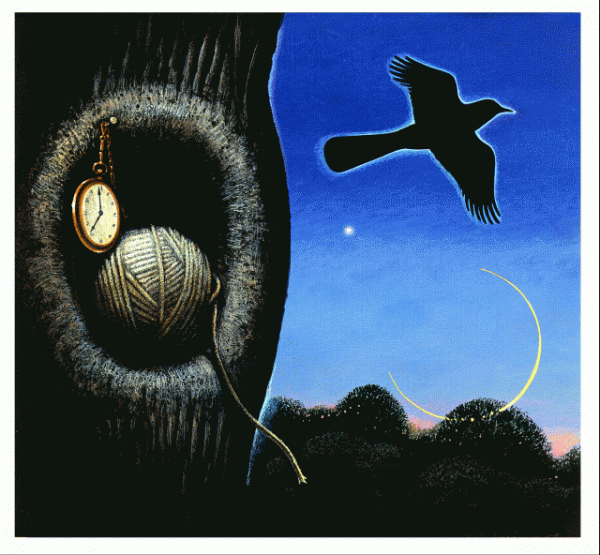 case of Tom Robinson, an African-American falsely accused of raping a white girl, and also includes a scene of an attempted lynching. While there are no directly graphic descriptions in the book (according to today’s standards), implications in the text about these incidents, especially during the courtroom scene, naturally pique students’ interest, causing them to want to know “more” about the repugnant details alluded to.
case of Tom Robinson, an African-American falsely accused of raping a white girl, and also includes a scene of an attempted lynching. While there are no directly graphic descriptions in the book (according to today’s standards), implications in the text about these incidents, especially during the courtroom scene, naturally pique students’ interest, causing them to want to know “more” about the repugnant details alluded to.
It’s possible that you’ve never read the book (somehow I got all the way through receiving a master’s degree without having done so), or perhaps if you did read it a long time ago, you don’t recall the details. It’s an important book–one of the most read American novels both here and throughout the world. Its nuanced yet honest consideration of the troubled history of the American South leaves the reader with a 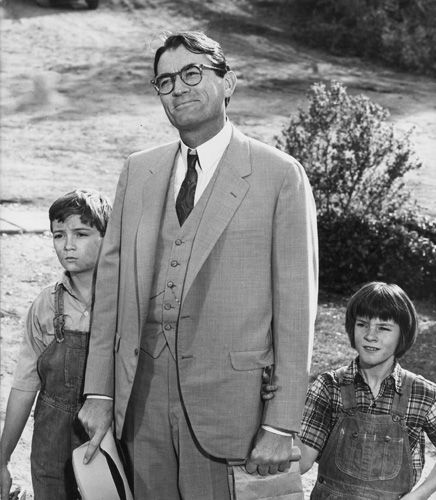 sense that there is hope that injustices of this society can be overcome through the goodness and the moral strength of brave individuals: As Atticus Finch says, “You never understand a person until you consider things from his point of view . . . until you climb into his skin and walk around in it.” It is, in the end, an affirming and redemptive novel, a gem of the American canon, but it should be assigned to younger students with a judicious eye.
sense that there is hope that injustices of this society can be overcome through the goodness and the moral strength of brave individuals: As Atticus Finch says, “You never understand a person until you consider things from his point of view . . . until you climb into his skin and walk around in it.” It is, in the end, an affirming and redemptive novel, a gem of the American canon, but it should be assigned to younger students with a judicious eye.
I plan to write an another article about Harper Lee’s brilliant appropriation in the novel of the southern mockingbird as her symbol for innocents who suffer injustices. If you haven’t read the novel recently, you might be enriched by doing so. You gain something new every reading.
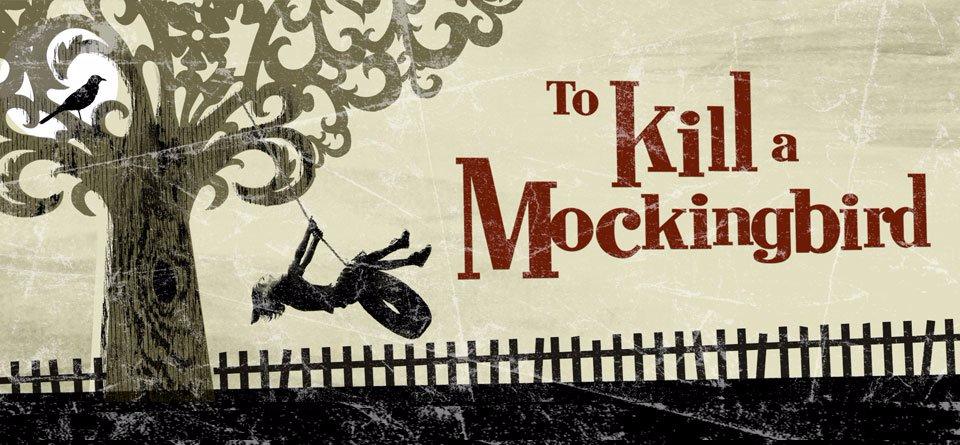
Cindy C Lange, MA | integritasacademy.com
The Prophetic Agony of Frankenstein’s Monster
Mary Shelley’s Frankenstein: The Modern Prometheus is a monster of a story. It incorporates the mores and tropes of the Romantic era in literature while pointing prophetically to the ethical scientific dilemmas of our own time. This much most of us 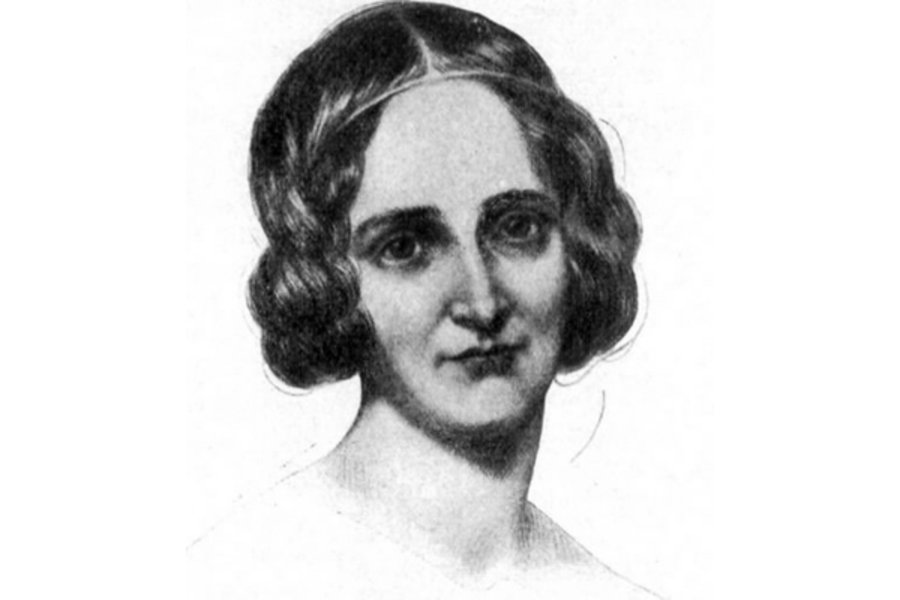 know: In pride and a desire for importance, Dr. Frankenstein creates a nameless creature known only as “The Monster” out of the body parts of corpses, and through a vague sort of electrical process he animates the monster.
know: In pride and a desire for importance, Dr. Frankenstein creates a nameless creature known only as “The Monster” out of the body parts of corpses, and through a vague sort of electrical process he animates the monster.
But unlike most 20th century movie portrayals, the original story is not a primitive horror film appealing to our base instinct of fear, but rather, a visionary and prophetic tale which imagines a horrific scenario in which man’s attempts to gain the powers of God result in the creation of a misshapen creature who retains the sensibilities and soul of a human being. Since all those he encounters find his visage viscerally repellent, The Monster cannot find happiness and satisfaction for the longings of his all-too-human soul. He aches for human companionship, including a wife and family, but those he meets reject him in both fear and disgust before he can reveal his compassionate, loving spirit to them.
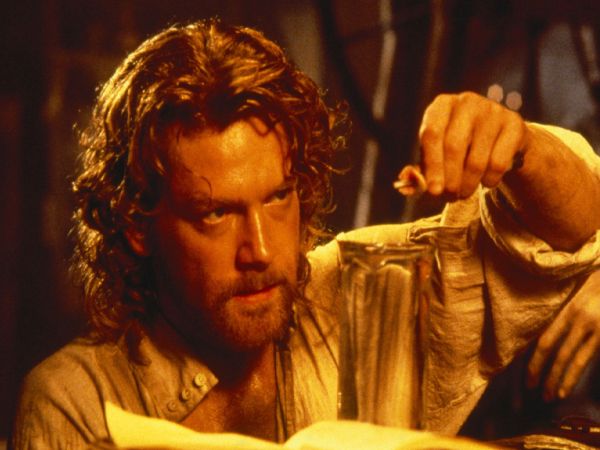 So the story is both a psychological insight into a person who is rejected by society – an outsider – and a monolithic statement about the devastation which occurs when man tries to play God. As the plot progresses we trace The Monster through his agonies: he attempts many times to connect with others, but eventually the continuous rejection he experiences fosters a pain in his heart so great that his bitterness turns him towards hatred and a revenge so all-encompassing that The Monster becomes a murderer. He then seeks reparation from his creator for the very act of his creation, murdering Frankenstein’s best friend, his fiancé, and his brother when Frankenstein will not cooperate with his demand to create a wife/companion for him.
So the story is both a psychological insight into a person who is rejected by society – an outsider – and a monolithic statement about the devastation which occurs when man tries to play God. As the plot progresses we trace The Monster through his agonies: he attempts many times to connect with others, but eventually the continuous rejection he experiences fosters a pain in his heart so great that his bitterness turns him towards hatred and a revenge so all-encompassing that The Monster becomes a murderer. He then seeks reparation from his creator for the very act of his creation, murdering Frankenstein’s best friend, his fiancé, and his brother when Frankenstein will not cooperate with his demand to create a wife/companion for him.
While Shelley did not foresee the specifics, she did accurately imagine the philosophies of the 20th and now 21st centuries, as many scientists now coldly glorify eugenics, create and destroy test tube babies, offer parents the choice of destroying unborn children because of their gender or perceived handicaps, and develop new life from harvested fetal cells. In short, she foresaw the philosophy of Hegel’s “Superman,” borne out first in the
Hitlerian Third Reich and in the policies of many “civilized” nations today. The fact that
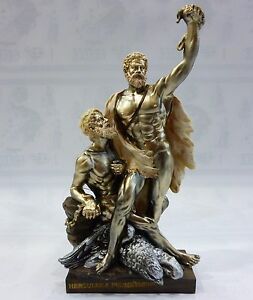
the full title of the first edition of her novel is Frankenstein: The Modern Prometheus reveals the depth of her understanding of the ultimate consequences in a society which was already rejecting the spiritual and sacred meanings of what it means to be human. She did, indeed, predict the future.
The ancient desire for power – the power to be like the creator, and the ways in which it would be played out in our world today through misuse of the discoveries of the Enlightenment – is so mightily and uncannily portrayed in Frankenstein that it’s almost unbelievable. Shelley truly saw what would happen if we were to choose to believe that the material world is the seat of our being, replacing the beauty of the soul and the true sense of the creator’s natural order with a mythical “perfection” which cannot be attained in this world.
*Recommended: Kenneth Branagh’s 1994 movie, “Frankenstein,” which is faithful to the original story.
Cindy C. Lange, MA
The Real Winnie-the-Pooh
It would be difficult to find someone who doesn’t appreciate the Winnie-the-Pooh stories, but I do have a question for you: Which Winnie-the-Pooh do you know?
Do you know only the cute cartoon Pooh Bear whose facile, happy-go-lucky visage traverses the screen in classic Disney cartoons? If so, you may want to become familiar with the original Winnie-the-Pooh whose seemingly dense but truly thoughtful 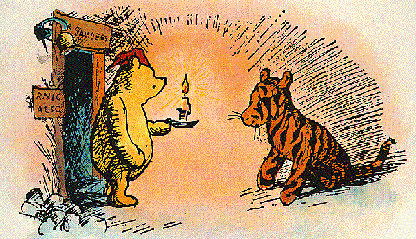 proclamations speak to the depths of a child’s heart. His friend Tigger is not the hyper, bouncy-flouncy character he is portrayed as in the films or Disney versions in their little children’s picture books. You can even see these contrasts through Milne’s drawings. For instance, Tigger’s visage and persona are not goofy: he is joyous, and there’s a difference. He may have silly aspects to him but like the others who inhabit the wood, he and his friends are sober-minded, genuine characters who express real questions and observations about their world. For instance, Eeyore is the personification of the side of us which thinks the worst; he reveals to children how others see pessimism, but he also “allows” them to feel this sad side of life. Children with a melancholy bent may find comfort in knowing Eeyore while at the same time recognizing that there is more to life than the discouragement he personifies. Christopher Robin’s living stuffed animals are only stuffed in the sense that they are full of the wonderment and curiosity of God’s children.
proclamations speak to the depths of a child’s heart. His friend Tigger is not the hyper, bouncy-flouncy character he is portrayed as in the films or Disney versions in their little children’s picture books. You can even see these contrasts through Milne’s drawings. For instance, Tigger’s visage and persona are not goofy: he is joyous, and there’s a difference. He may have silly aspects to him but like the others who inhabit the wood, he and his friends are sober-minded, genuine characters who express real questions and observations about their world. For instance, Eeyore is the personification of the side of us which thinks the worst; he reveals to children how others see pessimism, but he also “allows” them to feel this sad side of life. Children with a melancholy bent may find comfort in knowing Eeyore while at the same time recognizing that there is more to life than the discouragement he personifies. Christopher Robin’s living stuffed animals are only stuffed in the sense that they are full of the wonderment and curiosity of God’s children.
The inhabitants of The Hundred Acre Wood reflect Milne’s trust in the insights of children and also, the puzzlement they express about the larger reality, for they do not yet know the infinitude and the limits and of the world. They don’t know what bees can 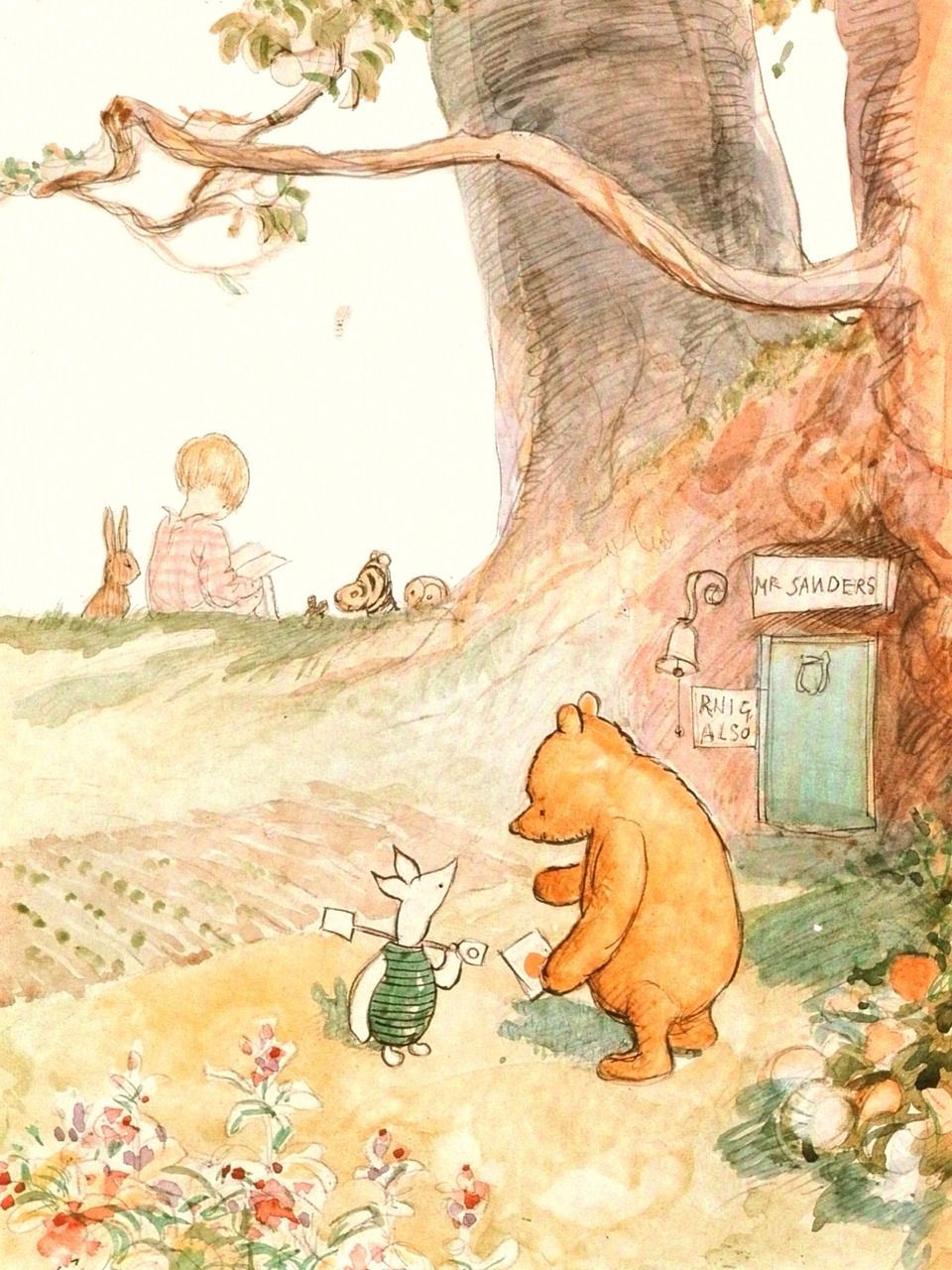 do; they don’t know what balloons cannot do. They don’t know that they may get stuck in a knothole in a tree. Unlike many children today, they (and Christopher Robin) have occasion to do a lot of waiting. They wait by their homes: they wait, and wait, and wait. And while they wait, they have the opportunity to think and we, their friends, get to hear their cogitations and ponder along with them. We especially get to know Pooh’s thoughts about that which he considers or does not understand as he navigates his way through a world he doesn’t comprehend but believes in.
do; they don’t know what balloons cannot do. They don’t know that they may get stuck in a knothole in a tree. Unlike many children today, they (and Christopher Robin) have occasion to do a lot of waiting. They wait by their homes: they wait, and wait, and wait. And while they wait, they have the opportunity to think and we, their friends, get to hear their cogitations and ponder along with them. We especially get to know Pooh’s thoughts about that which he considers or does not understand as he navigates his way through a world he doesn’t comprehend but believes in.
The tone and atmosphere of Milne’s books are in stark contrast to the Disney movies. The stories are placid and meditative. They are slow-moving and polite. They focus on the interior lives of children. When  Christopher Robin first bumps down the stairs with Pooh, he opens our eyes and returns us all to a world of childlike wonder where the imagination is celebrated with bliss, freedom, and a sense of rightness. The real Winnie-the-Pooh belongs alongside The Tale of Peter Rabbit as one of the best children’s/adults’ stories of all time.
Christopher Robin first bumps down the stairs with Pooh, he opens our eyes and returns us all to a world of childlike wonder where the imagination is celebrated with bliss, freedom, and a sense of rightness. The real Winnie-the-Pooh belongs alongside The Tale of Peter Rabbit as one of the best children’s/adults’ stories of all time.
*You can find the original Winnie-the-Pooh stories by A. A. Milne in any good bookstore or online. There are several books of stories and a book of poems for younger children, also, entitled Now We are Six.
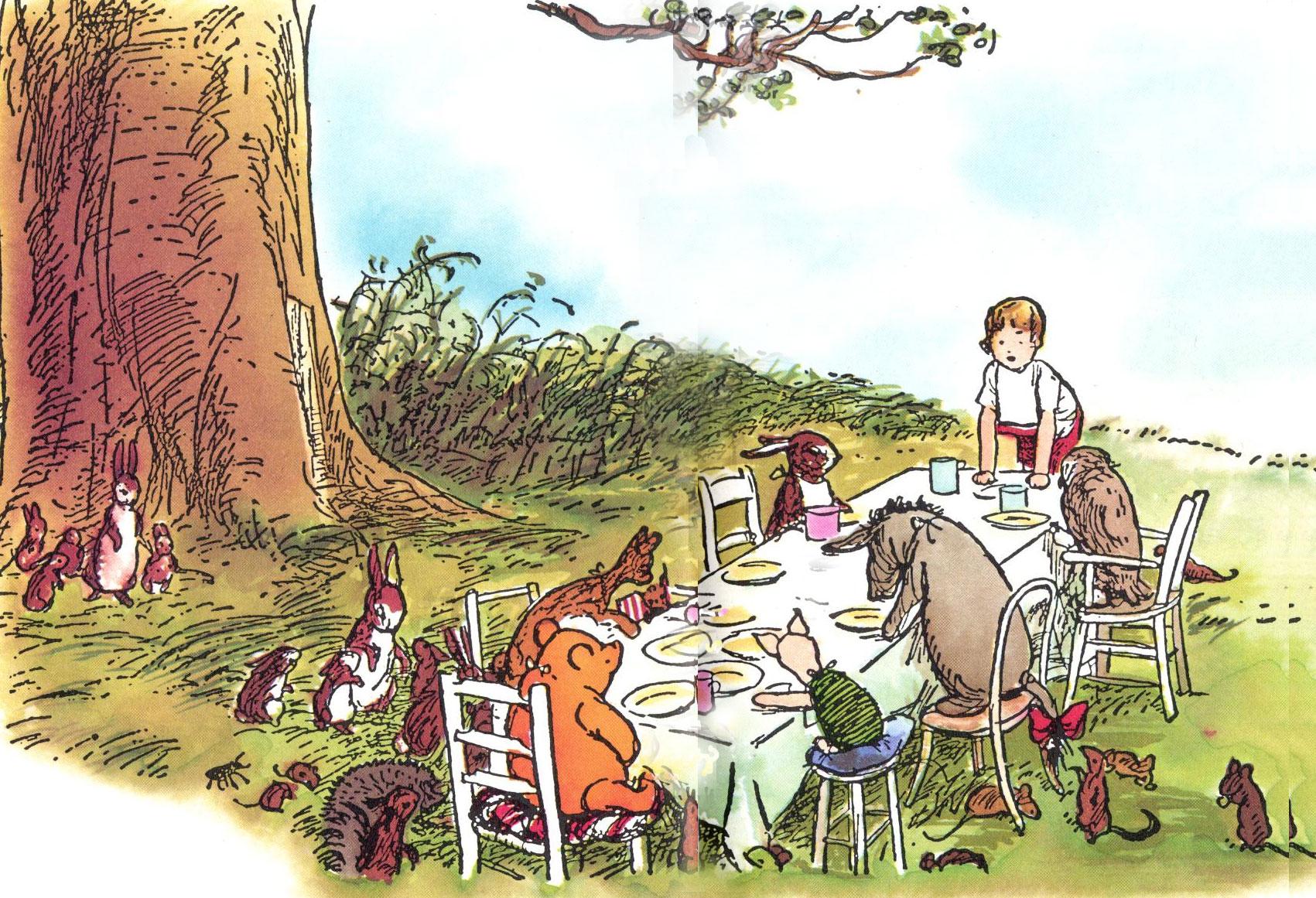
The Eternal Jane Eyre
Choosing the “best” novels is a nigh to impossible task, but at the top of my list is Charlotte Brontë’s Jane Eyre. The book both exemplifies and defies the genres of the Romantic Era and Gothic mystery; Brontë skillfully uses them as tropes to explore her complex, frustrating, challenging, lovable protagonist. The book is beloved by professors and “lay” readers alike because Jane’s inner life is so real that she not only lives in the pages of the book but with each subsequent reading she seems to grow and speak in a new way to the reader.

Brontë does a deep dive into so many themes through Jane’s persona that it’s impossible to explore them all in just one or two readings; topics such as the roles of women, freedom of the will, the consequences of arbitrary class distinctions and the challenges of living out moral values are presented with subtlety and believability.
If you think about it the plot of Jane Eyre is similar to that of an epic story, both externally and internally. From her bitter and angry response to the abuses she endures as an orphan to her metamorphosis into a woman of strength of will and deep principles, Jane’s journey takes the reader on a wild emotional ride. At first blush it might appear that the plot is a rather picaresque story as Jane moves from place to place encountering various people and experiences. But it is not: it is a plot unified by the development of Jane’s soul as she learns from her forbearing friends to replace her hardened heart with one overflowing with forgiveness and mercy. By the time she meets Rochester Jane’s fundamental Christian character is established, but her ethics are tried by the surprising moral choice with which she is presented. Like the “Crossing the Threshold” stage of Joseph Campbell’s Heroic Cycle, she must emerge from the Valley of Death before finding her true and spiritual heroic status.

After the author has developed the superior character of Jane, presenting it in terms of Christian goodness and morality, Brontë brings in her antithesis, St. John Rivers. (It is not a coincidence that we discover he is a cousin, for he is her alter ego in many ways.) His zeal for religion is real but self-serving, and he himself says he is “ambitious.” It seems odd for a person who is consumed by ambition to want to dedicate his life to missionary work, but Brontë is bringing home the point that true religion must come from a humble servant’s heart. A life dedicated to others is not enough if it does not flow from a loving spirit, and contrarily, a soul which is can serve others anywhere.
The novel also follows both external and internal mysteries. Brontë uses these plot angles to spur the reader on, but the deeper significance of them is to highlight Jane’s spiritual development as she encounters the challenges of life. She could have responded to Rochester’s deceit with bitterness as she did when she had been wronged when younger, but instead she sees his plight and forgives him. She successfully crosses the great moral threshold of her life when she freely both loves and leaves him.

Jane’s desire for freedom – including the freedom to choose right – is prominent in the story. The motif of birds in cages and in flight comes to the fore when Jane says, “I am no bird and no net ensnares me. I am a free human being with an independent will.” Jane’s strength of will comes from her belief that she has the ability to choose her moral destiny and she will not, under any circumstances, relinquish that right.
~Check out our courses at integritasacademy.com
Dragons and Devils and Knights, Oh MY!

The epic poem Beowulf and the Arthurian romance poem, Sir Gawain and the Green Knight are enduring works which continue to enthrall us today with their stories of brave heroes who sometimes exhibit superhuman powers. What is the appeal and importance of these works–what makes it worth sorting out and sometimes slogging through the challenging diction of these classic tales, today?
In order to grasp the entire picture, we need to understand the context of Beowulf. The hero of this story (think “Viking”) is a figure who straddles the period between pagan and Christian somewhere around 500 A.D. and the tale is set in the Nordic countries of Sweden and Denmark. The unknown author was British, possibly a monk, and probably wrote the work c. 900. Some scholars see the epic poem as a pagan story, based on the elements of the bloodlust and boasting incorporated in some scenes. Others see the poem as Christian, given the analogies made to biblical stories, and the incidents of humility which Beowulf and other characters attempt to exhibit in the midst of their tests and triumphs.
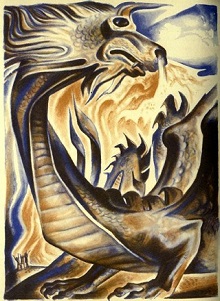
Because the story is “transitional” in time and nature, it presents the reader with an understanding of the cultural/religious changes which occurred in the west during this early medieval period. In Beowulf, the evil monster, Grendel, traces his lineage back to Cain, the first murderer, chronicled in the book of Genesis. And the dragon which our hero battles in the end may be more than just an outward evil, but perhaps also represents personal sins such as greed and envy.
In contrasting Beowulf to classical works such as The Odyssey, the shift in values becomes clear: while ancient heroes must seek kleos (glory), the heroes of medieval stories must strive towards the Christian virtues such as humility, chastity, and self-sacrifice. Since Beowulf straddles the two worlds, the story displays the contrasts and conflicts between the two cultures, and the ways in which Western culture was entering into the Christian ethic.

In the later medieval poem, “Sir Gawain and the Green Knight,” the Christian ethos is pushed further, as Gawain must learn that striving towards the virtues a knight has vowed to embody is not enough. As Gawain experiences powerful temptations and tests (magically induced by the evil Morgan le Fey), both he and the reader learn that while he may strive for perfection, he cannot accomplish this only through his own personal strength and will. Rather, the knight must rely on the power of God as he turns in to Him in humility after learning that he is in need of heavenly support, no matter how sincere his intentions.
These enduring tales of heroes and knights give insight into the culture, religion, and psyche which formed our literary tradition, and provide the background for how audiences even today long for icons to emulate. The yearning for the “super” character continues today, as anyone who goes to the movies knows. Everyone loves a hero!
~ Cindy C. Lange, MA
Ghosts we Know

In several of our high school courses we read about ghosts in short stories and plays, and students sometimes ask me why we do this. When I return the favor and ask them what they think, we often have some interesting discussions about the soul, spirituality, and self-knowledge.
Truly, literary ghosts are extremely important if we understand their metaphorical meaning.
First, the ghosts we know are often really–ourselves. Great literature reveals the human condition; it shows us how to rise above our weaknesses, mistakes, and sins, and what happens when we don’t. Ghosts tell us about ourselves and the things that haunt us, especially our own failings. They reflect what we are thinking, deep down, underneath self-delusions, guilt, and hidden self-knowledge. For instance, when we read Macbeth, we understand that ghosts can be the creations of our own minds: they may be forbidden desires, desires which dominate us so fully that against our own consciences, we believe in them and obey them. If we give in to them, we become ghosts ourselves: shells of our former selves who cower in fright as we hide from the results of our own selfish, evil actions.

Often, ghosts are about place and space. Virginia Woolf’s story, “A Haunted House,” expresses how connected we are to the places in which we’ve lived and loved. Here the new owners of a house find mysterious ghosts whose residual experiences inspire the them to continue the love which the original couple has, it seems, extended to them through time, in this cherished home which still emanates the deep, abiding commitment of its previous owners. As we grow older we learn how important our homes and communities have been to us, and they become part of the warp and woof of our own spirits–so much so that sometimes, we find it hard to consciously assimilate the depth and breadth of our past experiences.

Finally, ghosts reveal the spiritual nature of our existence and our connection to immortality: life which extends beyond the present. When Hamlet is presented with the ghost of his father, he is not sure if the ghost is a demonic deception, or his dead father, directing him from the beyond. Even those of us with strong religious beliefs can’t conceive exactly of what lies beyond, or how those who have died view us. While Christians are instructed not to attempt to hold seances with the dead, this doesn’t abrogate the question: what, exactly, is the relationship of those of us on earth to those who have died? And what is it like for them, in their new state? Hamlet wrestles with how he should relate to what he thinks may be his father’s spirit, and in so doing reveals the internal conflicts we all experience when we confront personal tragedies, and how we might have been responsible for them, or may be able to repair them afterwards.
Ghosts may bring forth our regrets: sorrows which challenge us to either wallow in self-pity and anguish, or to accept reality, in the recognition that it is only in embracing our situation and our own failings that we find healing, peace, and maturation. Or, perhaps ghosts will bring comfort to us: the memories of times with loved ones now gone, the times with children now grown. Whatever our personal ghosts are, reading and writing about them is a way forward to understanding ourselves, the world we live in, and the God who created us.
© Cindy C. Lange, MA
integritasacademy.com
Check out our classical courses
| Integritas Academy |
Frodo’s Internal Journey
The Fellowship of the Ring sets the stage for the Lord of the Rings series as Frodo and his companions begin their perilous and often confusing journey, which stands in contrast to the ordered world in which they live, The Shire, in Middle Earth. This “disordered” journey is a form of entering chaos: Like King Arthur’s knights as they sally forth from Camelot, the members of The Fellowship venture far and wide to conquer evils which surround them. However, unlike the Knights of the Round Table, the members of The Fellowship recognize that as they set out to destroy evil, they also bear the potential for the destruction of the kingdom within themselves. The Ring itself is a constant reminder to them that they must first fight their own internal selfish desires in order to save The Shire.

As a “quest” story, the novel contains elements of both classical and medieval literature. Middle Earth is a highly ordered world in which all creatures have their proper roles which are integral to the natures of the characters: an elf could no more attempt to behave like a hobbit than you or I could attempt to behave like a dog or a cat. This order is hierarchical; some creatures’ duties—and some characters’ duties– are more significant in the larger community than others; some folks are more civilized and wealthier than others. However, in this sort of society, a person with a “lower” occupation or status is not a less important person. For instance, the Innkeeper at The Sign of the Prancing Pony, Mr. Butterbur, is no less valuable than Gandalf. Rather, his role suits him and his class of creature; his job “belongs” in the fabric of the society just as much as Gandalf’s does. But Tolkien breaks free of the traditional medieval roles when he calls Frodo, that modest and insignificant hobbit, to save the kingdom.
As is also true in the King Arthur stories, Middle Earth is a place where the natural world is important and valuable. Being “good stewards” of what we are given to tend, whether it be a garden, a forest, or a river–is key, and there is a balance between the creatures’ using and respecting nature. Thus, the hobbits cut back the trees from the Old Forest at the edge of their lands, but leave the Old Forest alone in every other way. Nature is connected to many of the creatures closely, as we see with Goldberry, who, we are told, is the daughter of the River. Also, the natural world reflects the nature of the creatures who inhabit it; the hobbits’ shire is green and cozy and friendly. In Middle Earth, the physical world embodies the goodness and concreteness of reality, and this is most carried forth into the lives of the hobbits, whose liking for beer, food, gift-giving, home and companionship emphasizes their close and deep connection to the earth and world around them. The interactions which the members of The Fellowship will make with the forest and the river serve to help us understand that nature itself is being corrupted and disfigured; the hobbits are responsible for recovering both the kingdom and its environment.
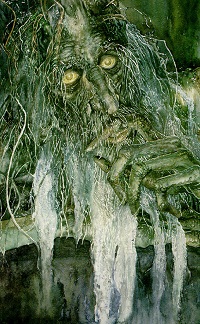
The hobbits’ desire for comfort extends solidly to their ability to shut the outside world out and imagine that they live in complete safety. When The Fellowship of the Ring opens, that safety is clearly no longer guaranteed. Rumblings of strange doings and mysterious strangers tell us early on to Beware! Middle Earth is not safe and this includes the fates of harmless, peace-loving hobbits. Their love of calm stands in stark contrast to the difficult quest which Frodo and his friends undertake; as the story unfolds, we begin to see that Middle Earth is now not the ordered world which it should be. Trouble is afoot, and Frodo, in spite of his fears, will choose to leave his comfortable home to confront this trouble.
As did the knights of medieval times, Frodo accepts the challenge to go forth in search of danger. Though Gandalf tells him that he should not go out of his way seek danger, the truth is that in order to make sure that the Shire is kept safe, Frodo must plunge headlong into an unknown evil, putting his life in jeopardy. Like martyrs and war heroes, Frodo charges ahead to do the right thing despite his fear, weakness, and sinful desires. Where the quest ends he does not know; the path he must follow is also a mystery. What is clear is that Frodo and his friends choose to respond to the challenge of the quest regardless of their great personal weaknesses and fears.

The hobbits respond with courage to a life-threatening situation in which they must stand up and choose which side they are on. Like the heroes of old, they embrace the challenge; what’s different with Tolkien’s story is that characters’ personal foibles do not just influence the story—they drive the story forward, because the interior lives and ethical choices of the protagonists are a reflection not only of their decisions to accept the quest, but of their personal spiritual and moral development. Middle Earth is a proving ground for the soul, as much as it is a place for the external battles in Middle Earth. Rather like our own world, if you believe in the Christian worldview.

Initially, the established roles of the hobbits are like those in the medieval world, but Tolkien moves past the traditional story as he reveals the hobbits’ “new” role as lowly individuals who make moral sacrifices in the hope re-establishing a place of goodness and happiness; a world free from despots where the inhabitants will live in a peaceful and joyous community of mutual love. The members of The Fellowship are “co-inheritors” in their Kingdom because they offer themselves up sacrificially to save and rejuvenate the world they know and love.
©Cindy Lange, MA
integritasacademy.com
The Fiery Heart: Musings on The Scarlet Letter and Freedom of the Will
In Lit and Comp Year 2 we investigate Nathaniel Hawthorne’s The Scarlet Letter, and you can cut the symbolism with a knife! The scarlet letter Hester Prynne must wear (symbolizing her adultery); a simple rose bush; a child named Pearl; a freak meteor whose path makes the shape of an “A” which shoots through the sky at a climactic moment–these are just some of the enduring symbols which have entered annals of literature through this quintessentially American classic.

What are the results in the lives of those who live in a community–in this case, Puritan-era Boston–which emphasizes justice over mercy, punishment over compassion? What happens to individuals in a society which insists on its members revealing and repenting of their sins in public? Hawthorne invokes innovative symbolism in the spirit of the Romantic literary genre to delve into these questions.
Because an ancestor had been a judge at the Salem Witch Trials, Hawthorne was ambivalent about his own Puritan heritage, and the novel is his letter to the world expressing his angst. In fact, Hawthorne was so shamed by the association that he added a “w” to the family name. His internal conflicts come to life in The Scarlet Letter, as he delves into the question of whether man’s law necessarily represents God’s law, and exactly what the nature of God’s law is, through the lives of the inhabitants of mid-17th century Boston.
In addition to telling a gripping tale, the book is prescient in that it reflects important conflicts and paradoxes yet to come in the American experience, especially the roles of women in society. However, the main theme revolves around the question of freedom of the will. Hawthorne places three adults in a situation where they each have the opportunity to choose their own futures freely, when they otherwise would not have had that option. The “New World” functions seamlessly as the backdrop for the idea that there is a myriad possibilities, lives, and futures available to us. The three each choose very differently, and the reader can see their inner lives as they live out their choices–how their characters evolve or devolve.

In short, the novel presents a psychological and sociological experiment: what are the dangers, benefits, and limits of the expression of the individual’s will? Nathaniel Hawthorne is one of our early American authors, but he qualifies as a forerunner to the psycho-therapist, too, based on content of The Scarlet Letter. If you have never read it, you may want to give it whirl!

Cindy C. Lange, MA
integritasacademy.com
The American Spirit in Florida: A Review of Patrick D. Smith’s A Land Remembered
A Land Remembered is a uniquely American epic—set in Florida, but reminiscent of the best of the Western histories and sagas. It reflects and retells the settling of Florida, incorporating stouthearted characters who survive swamp, jungle, hurricanes, wild animals, to conquer the humid and often unfriendly Florida territory. The story also has themes redolent of the tales of Wild West: the arguments between those who want to fence the land and the earlier settlers who want the land left free and open; the fiercely independent spirits of those who dared to settle and conquer this hazardous, uncivilized land.

The tale covers 3 generations, beginning with Tobias MacIvey, the bold pioneer who first enters the Southern wilds, and continuing with his son Zech and then grandson Solomon. Each man represents (and furthers) a specific era in the development of Florida. Tobias, the patriarch, is the one most in tune with nature, as with his wife and baby he attempts to survive in the free, open lands while battling the elements. His attitude towards the Native Americans is one of friendly coexistence, and as his son Zech grows up, he inherits this attitude, and falls in love with a young Seminole woman—instead of choosing between her and the white woman he marries, he loves them both, thus symbolizing the tenuous “marriage” of the two cultures, and the influence of each upon the other.

The story also exhibits the ways in which this uncultured land, like the west, equalizes the races, as African-American ranch hand, “Frog” becomes part of the warp and woof of the MacIvey family. This primitive land, untouched by “culture,” providentially allows for all peoples to meet on a level plane, and they build the future together, rather than as master and servant. Florida is a new kind of “south.”

The grandson, Sol, chooses not to live on the land, but instead becomes a real estate developer, thus introducing us to the “new” Florida we know today: a land of entrepreneurs and people who, for the most part, do not live in the agrarian and ranching culture of those white people who previously populated the land. The story begins with a flashback as Sol, aged and dying, chooses to return to the cabin of his forefathers, leaving behind the life of luxury he has led, regretful that he has not kept the values of his father and grandfather. A Land Remembered is a profoundly “American” piece of literature in every way, genuine in its telling. It pulls powerfully at the spirits of those of us who love the pioneer character, with all of its bravery, faults, and independence of mind: the spirit which created America.⸸

“All I’m trying to tell you is to be strong. Don’t ever let nothing get you down. Don’t be afraid or ashamed to love, or to grieve when the thing you love is gone. Just don’t let it throw you, no matter how much it hurts.” ― Patrick D. Smith, A Land Remembered
A young people’s version of A Land Remembered is available, and is used in many Florida schools.
© Cindy C. Lange, MA
integritasacademy.com
____________________________________________________________________________
The Truth of Fiction
What does constitute a great piece of fiction? In our Literature & Composition: Year 1 class, we read the bittersweet classic by Margaret Craven, I Heard the Owl Call My Name. The story is about a young Anglican pastor, Mark Brian, who is sent to a rural native community in British Columbia, and concerns his spiritual and internal growth as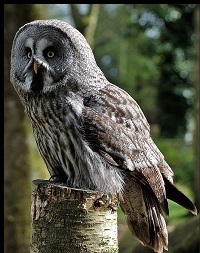 he learns to love this land and people, unaware that he himself will soon die. Each year when I reread it, I choke up, no matter how much I’ve prepared myself beforehand for the moving conclusion. The book has such power because it speaks truths with beauty and simplicity; the author’s restrained diction causes the reader to genuinely feel the unspoken, deep emotions which the characters express, often through what they do not say as they face their trials and joys. The straightforward yet imagistic style of the book also goes along with the setting and flavor of the native culture, since the people there, in addition to living without most of the material comforts of modern life, are without guile. I Heard the Owl Call My Name also speaks to what is best in us, pointing our souls towards the spiritual values which lie deep within through its symbolic language, borrowed from the natural world.
he learns to love this land and people, unaware that he himself will soon die. Each year when I reread it, I choke up, no matter how much I’ve prepared myself beforehand for the moving conclusion. The book has such power because it speaks truths with beauty and simplicity; the author’s restrained diction causes the reader to genuinely feel the unspoken, deep emotions which the characters express, often through what they do not say as they face their trials and joys. The straightforward yet imagistic style of the book also goes along with the setting and flavor of the native culture, since the people there, in addition to living without most of the material comforts of modern life, are without guile. I Heard the Owl Call My Name also speaks to what is best in us, pointing our souls towards the spiritual values which lie deep within through its symbolic language, borrowed from the natural world.
The novel uses foreshadowing and contrasts between two disparate cultures in organic ways which function as a tapestry, weaving together plot development, theme, and tone to connect the reader emotionally with the characters and their culture. From the first page wherein we a learn that the young pastor is unaware that he is dying, until the closing chapters in which the earthly and spiritual pilgrimages of Mark come to a fitting and moving conclusion, the reader accompanies Mark on his journey towards Love.
The perfect novel is a vessel which contains a unity of subject, thought, and spirit. The perfect novel inspires and rejuvenates our souls, calling us towards the transcendent. The perfect novel leaves us with the sense that we are more complete than we were before we read it; we are more than the sum of our parts; we more keenly know and feel our connections to humanity and to our spiritual roots.
©Cindy Lange, MA
integritasacademy.com
Mother Goose: Beloved Crone and Culture Bearer
We all know the following Mother Goose rhyme: Jack be nimble / Jack be quick / Jack jump over the moon. Wait! Something’s wrong here. Wasn’t it the cow that jumped over the moon? Indeed, nursery rhymes sound the depths of our childhood experiences, but they serve as far more than fond memories. The nursery rhyme has been a training ground for English speaking children for the past 400 years or perhaps longer. Mother Goose was the first “holistic educator,” because nursery rhymes teach to every aspect of a child’s nature: sensory, physical, cognitive, and moral. We can say with assurance that Mother Goose was far ahead of her time.
The mythical figure of Mother Goose is usually depicted as a crone who presides over the treasury of English nursery rhymes which has evolved over past centuries. The earliest reference to her is in a collection of French stories in 1650, but the name came into its current usage in 1780 after a British publisher adopted it in reference to a “compilation of traditional English nonsense songs and rhymes.”[i] The tradition of Mother Goose was  carried across the pond to the American colonies, where she has steadfastly remained the reigning denizen of early childhood literature. There are several reasons for the unwavering popularity of her verse; investigating them gives insight not only into the poems, but into the nature of children, and more specifically, into the ways in which children can and should develop.
carried across the pond to the American colonies, where she has steadfastly remained the reigning denizen of early childhood literature. There are several reasons for the unwavering popularity of her verse; investigating them gives insight not only into the poems, but into the nature of children, and more specifically, into the ways in which children can and should develop.
The first and most important function of the rhymes is that their insistent sing-song rhythms immerse the very young in the cadences of the English language. The rhymes prepare inexperienced ears to recognize not only specific words, but entire phrases, laying down the neural pathways for children to aurally receive, process, and finally, organize the more detailed, chaotic information which will soon bombard them as they grow past toddlerhood and move into the world of cognition and reason. Take the well-known Here We Go Round the Mulberry Bush—this ditty repeats the phrase “the mulberry bush” three times within four lines, with each repetition varying the tune and pitch slightly. Why? By retaining the same words while slightly altering the tune and placement on the musical scale, the  phrase takes the child incrementally from the “known” to the “unknown”—this is foundational to the way that we learn. As they chant, the children run around an object, developing physical abilities in tandem with tonal memory. The content of this rhyme is irrelevant, but the repetitive nature of the words, with their sing-song lilt, provides children with a now-familiar milieu in which to learn; their auditory world becomes a known haven which yields a sense of security through its limited phraseology and repetition, while acting as a vehicle through which they refine their ability to distinguish differences in sounds.
phrase takes the child incrementally from the “known” to the “unknown”—this is foundational to the way that we learn. As they chant, the children run around an object, developing physical abilities in tandem with tonal memory. The content of this rhyme is irrelevant, but the repetitive nature of the words, with their sing-song lilt, provides children with a now-familiar milieu in which to learn; their auditory world becomes a known haven which yields a sense of security through its limited phraseology and repetition, while acting as a vehicle through which they refine their ability to distinguish differences in sounds.
The rhymes also provide children with information about the world around them. Mother Goose “educates” by creating touchstones for their expanding minds. For instance, many are about foods in the household. “Pat-a-cake” explains the baker’s wares; “Little Jack Horner” glorifies the Christmas plum pudding (and Jack’s thumb!); silly Jack Sprat and his wife exemplify fat and lean; the “little piggies” go to market looking for roast beef, etc. Nursery rhymes also familiarize children with commonplace items in an entertaining manner. A cat plays a fiddle, a cow jumps over the moon, dishes and forks run away together . . . amazingly, this simple technique causes children to begin to make connections between and among objects, developing their analytical processes through the use of the furnishings of their everyday world.
Additionally, nursery rhymes serve to help children learn and appreciate humor, as in Sing a Song of Sixpence, wherein the king is served a blackbird pie in which the still-alive birds pop out of the crust singing. (Blackbirds were eaten as a gourmet item in earlier times.)
Or take Peter, Peter, Pumpkin-eater, in which Peter cannot “keep” his wife until he places her in a pumpkin shell (!). Learning humor is a crucial aspect of developing critical thinking, and helps children to learn to differentiate between various aspects of the world around them, as they note the contrast between the joke-rhyme and the real world it supposedly reflects.
Mother Goose rhymes also inculcate morals and rules in children by using a form which they will easily remember, as in this sardonic scolding of a child for his tardiness: A dillar, a dollar, a ten o’clock scholar! / What makes you come so soon? / You used to come at ten o’clock / But now you come at noon. Or this one: Seesaw, Margery Daw / Sold her bed / And laid upon straw. And we all know about what happened to Jack and Jill when they ran up the hill, and it wasn’t pretty! While some lessons Mother Goose teaches might seem grim to us (Ladybird, Ladybird, fly away home / Your house is on fire, your children all gone!) they were necessary helps to children of previous 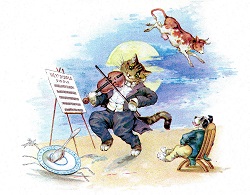 generations, who lived in a harsher environment where these admonitions were necessary. However, There’s a Neat Little Clock is charming even to the 21st century mind: There’s a neat little clock- / In the classroom it stands- / And it points to the time / With its two little hands. / And may we, like the clock, / Keep a face clean and bright, / With hands ever ready / To do what is right.
generations, who lived in a harsher environment where these admonitions were necessary. However, There’s a Neat Little Clock is charming even to the 21st century mind: There’s a neat little clock- / In the classroom it stands- / And it points to the time / With its two little hands. / And may we, like the clock, / Keep a face clean and bright, / With hands ever ready / To do what is right.
The riddle-rhymes push the envelope further: My favorite is As I Was Going to St. Ives, which is often used in first grade readers because it incorporates logic with arithmetic (or so it would appear):
As I was going to St. Ives I met a man with seven wives, Each wife had seven sacks, each sack had seven cats,
Each cat had seven kits: kit, cats, sacks and wives,
How many were going to St. Ives?
Do you know the answer? Actually, it is unclear. Perhaps only one person was going to St. Ives, since the speaker states in the beginning that he is going there. Or perhaps everyone is headed that way, including the animals. Then there would be 2,802—talk about a traffic jam! It’s even possible that the last line of the riddle is only asking how many of the party he met were going, and doesn’t mean to include him in the question, in which case it is possible that zero could be the answer. This rhyme is actually a form of a riddle from 1650, BC called The Papyrus Rind[ii]–what better way to introduce children to the vagaries of language than that of a timeless logic problem hidden in a nursery rhyme?
Mother Goose has remained with us these many centuries because she is worthy of the honor; she is a teacher par excellence, an iconic and insightful culture-bearer who inculcates deep lessons into our Western heritage. Let us adopt her and say wholeheartedly: Welcome, Thou Beloved Crone!
©Cindy C. Lange, MA
http://www.integritasacademy.com
(Originally published in the May, 2011 Epistula, Veritas Press Publishing Company)
Sources:
[i] http://www.rhymes.org.uk/as_i_was_going_to_st_ives.htm.[ii] http://en.wikipedia.org/wiki/As_I_was_going_to_St_Ives.
Briggs, Raymond, The Mother Goose Treasury. Coward-McCann, Inc. New York: 1966.
http://www.rhymes.org.uk/as_i_was_going_to_st_ives.htm.
http://en.wikipedia.org/wiki/As_I_was_going_to_St_Ives.
Mother Goose Anniversary Edition, The. Scholastic Inc. New York: 1916.
Frost Thoughts: Poetry with a Punch
There are various approaches to understanding poetry. In the 20th century, the rise of literary criticism began the process teachers now use of analyzing specific literary (rhetorical) devices such as similes, metaphors, etc. to explain the poem. In the 19th century, though, the focus was on having students memorize the poetry and experience the language of the works as a whole. Which approach is best? My answer is both. Memorizing a poem “makes it your own,” but understanding the diction leads you to richer understanding which causes the poetry to enter deeply into your soul.
Today, honors courses require that students take the poems apart rhetorically. This approach to literature, and poetry specifically, is due to the influence of the New Critics, the group of 20th century authors who popularized the idea of literary criticism. They, and their approach, are no longer “in vogue” in universities today, due to the rise of

Marxist-feminist and other post-modern critical approaches. But in truth, literary criticism as we know it owes its existence to the New Critics such as I. A. Richards, et al, since they taught us how to break apart diction with such careful and specific techniques.
Some assert that analyzing literature rhetorically in this manner “ruins” the enjoyment of it; this is not true. Like any aspect of learning, the more you understand the specifics of the topic, the better you can appreciate its unity. Those who have had negative experiences “digging into” literature have simply had poor teachers who have not successfully passed on the truth that in the humanities, we must comprehend what we read both inductively and deductively, and when a student is challenged to do this, he begins the process of independent thinking, of unifying his thought so as to see the poem as a powerful communicator of truths, both emotional and spiritual.
Let us take Robert Frost’s poem, “Nothing Gold Can Stay,” as an instance of a poem which yields rich results when we “unpack” it rhetorically. Here is the poem:
“Nothing Gold Can Stay” ~ Robert Frost
Nature’s first green is gold,
Her hardest hue to hold.
Her early leaf’s a flower;
But only so an hour.
Then leaf subsides to leaf.
So Eden sank to grief,
So dawn goes down to day.
Nothing gold can stay.
Frost is deceptive. He uses nature to write “beautiful” poetry, but upon examination, we find that his diction is complex, and if we are not extremely careful in approaching the poems, we will be led astray, rather like a detective who is distracted by false evidence, and thus misses the clues which will lead him to discover the true topic at hand.
Although he lived during the time of the development of modern poetry, or “free verse,” which abandoned traditional rhyme schemes and meters, Frost despised this movement. He famously quipped that writing free verse is “like playing tennis with the net down.” In other words, without the rules, there is no poem, no way to create a work of value and structure. Thus, Frost’s poetry is traditional, but deceptively so because of his informal diction; he appears to be holding a conversation with us over the backyard fence or a cup of coffee, when in fact he is always giving us fresh assessments about life and the world, and our relation to it as humans.
After reading the poem out loud, we establish the rhyme pattern. (For those already familiar with these basics, please forgive this brief review.) The rhyme pattern is that referred to as “couplets,” as two consecutive lines rhyme before moving on to the next set of two. Always use lower case letters to show a rhyme pattern, as shown at the end of each line. Frost’s is traditional here, as always:
gold/hold a
flower/hour b (skip the “er” in flower, and read it in the 19th century way, as “flow’r”)
leaf/grief c
day/stay d
We engage next with the meter: The rhythm of the poem. Each syllable is stressed or unstressed in our natural speaking manner, creating the “patterns” we know as “meter.” The first and last lines do not line up with the meter of the rest of the poem; lines 2-7 are strictly iambic, but the first and last lines are not. Iambic meter means that the first syllable is stressed, and the second is not. There are two syllables in each “iamb”; each “iamb” is called a “foot.” A poet may have as many “feet” in a line as he chooses. Frost chooses to have three in his lines here, so this is called iambic trimeter.
But let’s get back to the intrigue of those first and last lines not being iambic. Why? The lines have more stressed (emphasized) syllables in them than the iambic lines. When a poet uses stressed syllables in this manner, he is drawing the reader’s attention to these lines. Frost wants us to notice these first and last lines because they are communicating his theme. Additionally, he uses alliteration to pound home the stress: the hard “g” sound in “green” and “gold” wakes us up. Let’s look at the first line:
The emphasized (stressed syllables) are shown in capital letters:
NAture’s first GREEN is GOLD.
Nature, green, and gold are emphasized. We get it that this poem is about nature. But—is it? Why is nature’s first green also gold? Is that true? Nature’s first green is actually in spring. How can green be gold? The leaves turn gold in the fall, right before they die and fall off. So even in the first line, Frost is presenting us with a dilemma—a quandary. Let’s go on and see if we can find some explanation in the next three lines:
Her hardest hue to hold.
Her early leaf’s a flower;
But only so an hour.
Gold is the hardest hue (color) to retain. Why? – because the leaves are dying. While the shimmering gold leaf is the height of beauty, it is also bittersweet; it is a sign of impending death. So, this poem might not be about how beautiful nature is; it might be about something else, such as, perhaps, that death is inevitable. And, not only is death unavoidable: importantly, life’s climax, this nadir of perfect glory, is fleeting, and even as the leaves enjoy their golden glory, they are moving towards death, as we are.
The next line is tricky, but is a continuation of his now clear theme, that life is temporal, and we are all on a journey towards death:
Then leaf subsides to leaf.
The question here is: What does “subsides” mean, in context? It can mean lessen, become less severe, etc. We can discover what Frost means by paraphrasing some: As it dies, one leaf gives way to another leaf which will spring fresh in spring, green and bright. A leaf dies, but it is replaced by another, new leaf: the cycle begins again, and the process repeats itself each year. That’s fine, but – didn’t we already know that? Frost was just laying the groundwork: now he goes on to zing his point home in the last three lines, explaining all in the poem’s “shift”:
So Eden sank to grief,
So dawn goes down to day.
Nothing gold can stay.
Most poems have this “shift”- a point where the author surprises the reader somehow as he changes his viewpoint; it might be a minor twist, or it might be a big one. It’s minor in this poem, if you’ve been paying close attention. Paraphrased, the first of these lines says,

“In the same manner, death came into the world through the sin of Adam and Eve in the Garden of Eden.” The allusion to Eden encapsulates much, but it’s key to understanding the poem; “thus death came into the world,” as the New Testament says. Notice the word “sank” in the phrase “sank to grief,” which implies that originally, the progression to death did not exist. There was a better world, but we do not live in that world. We must accept not only the mortality of nature in general, but our own mortality.
Although Frost is not religious, he relies heavily upon this Judeo-Christian understanding of the nature of humanity: death entered into the world, and it is inevitable. Think about the line
So dawn goes down to day
Here is another quandary. Shouldn’t dawn be the beginning of day; don’t we say that the sun comes “up”? Isn’t it sunset that goes “down”? Why does dawn go “down” to day? You may already see the answer: because dawn brings forth another day, time has progressed. The dawn goes “down” not only because it disappears as day springs forth, but because it is another harbinger, a marker on the march of time towards death.
The poem concludes with a strong accent on the word “nothing,” which we now understand much more clearly than we did when we read it as the title:
NOTHing gold can stay.
The unspoken messages are now clear: life is precious, but transient, and we should value every minute, for we do not know when the golden leaves of our lives will drift into eternity. Nature’s first green is gold because the very start of life (spring, green) is also the beginning of our journey towards death—we eventually become “gold,” when we reach our maturity, and then will soon pass from this life to the next. We may or may not believe in the biblical explanation for the brief nature of our lives, but we know that its point is true. And, he implies, if we accept this reality, we will have a better chance of appreciating the life we experience here, before we “shuffle off this mortal coil.”
©Cindy C. Lange, MA
https://www.integritasacademy.com

______________________________________________________________________________________________
https://www.english.cam.ac.uk/classroom/pracrit.htm
https://www.brainyquote.com/quotes/robert_frost_151821
https://www.loa.org/writers/271-robert-frost
_____________________________________________________________________________________________
Neil Gaiman’s “The Ocean at the End of the Lane” Part I: Furrows of Fabric in Jungian Cloth
This article will be presented in two parts: the first is an interpretation of Gaiman’s book; the second will be my commentary on the book in terms of the sacramental Christian worldview.
In The Ocean at the End of the Lane, Neil Gaiman investigates the ways in which we interpret and assimilate events and memories, and how our ability to incorporate our past affects and determines our present understanding of our selves and the world around us. Gaiman re appropriates disparate myths and symbols in a complex manner; the unifying theme is Jungian psychology, brought to life through traditional symbols the author has synthesized. Reading Ocean is a bit like watching Christopher Nolan’s movie Memento, wherein the character and audience experience the events of his life in reverse, and each slide back into the past presents a different aspect of key events of the protagonist’s life, because we can only cope with the harsh realities of life when they are put into context with the present. In Ocean, though, we are left not solely with the conclusion to a specific story, but rather, the working out of a theory as to how our minds and memories adapt as we grow up and learn about evil in the world and the failings of those we love. It is a book about how we help ourselves understand the vagaries of existence.
The plot revolves around an unnamed artist’s return to his family home in the British countryside which jettisons us into a flashback; our artist is a bookish boy, aged 7, in the 1960s, alienated in his life with his parents and sister, none of whom are sympathetic to his sensitive, artistic nature. Not exactly original—but Gaiman uses the boy’s sense of disjointedness, of not belonging, to introduce the broader theme of the individual’s psychological journey into self integration. Carl Jung posits that the self can only become whole by assimilating past experiences with personal values and  desires. In Ocean, the artist must recall his past in order to incorporate his understanding of painful memories into who he is now. (Though the boy is only 7 years old, that number is probably symbolic; his internal conflicts are those of an adolescent who is trying to “complete” himself and come to an adult understanding of the world.) The book investigates the traumatic events which led to the boy’s entrance into adulthood, and therefore, full personhood, but ultimately, we learn that he has returned many times to the ocean; i.e., we all must go back to revisit our memories periodically if we are to continue the process of understanding who we are, and in order that we may make sense of our personal “worlds” within the context of our larger reality.
desires. In Ocean, the artist must recall his past in order to incorporate his understanding of painful memories into who he is now. (Though the boy is only 7 years old, that number is probably symbolic; his internal conflicts are those of an adolescent who is trying to “complete” himself and come to an adult understanding of the world.) The book investigates the traumatic events which led to the boy’s entrance into adulthood, and therefore, full personhood, but ultimately, we learn that he has returned many times to the ocean; i.e., we all must go back to revisit our memories periodically if we are to continue the process of understanding who we are, and in order that we may make sense of our personal “worlds” within the context of our larger reality.
Ocean is a full blown myth which explores our subconscious and conscious motivations and memories; Gaiman questions the validity of our recollections while at the same time affirming the importance of them as the fabric by which we know ourselves. However–and this is the crucial conflict in the book–we cannot directly access our painful experiences–the “raw” data–without experiencing a disintegration of the self; we can only accept and integrate major changes in our lives through symbols and archetypes, which facilitate the integration of these occurrences and memories into the “self.”
painful experiences–the “raw” data–without experiencing a disintegration of the self; we can only accept and integrate major changes in our lives through symbols and archetypes, which facilitate the integration of these occurrences and memories into the “self.”
Jung’s anima or animus is the vehicle through which experiences are sorted, interpreted, and assimilated into the self, and in Ocean, the Hempstock family, and particularly Lettie, play that role. The name Hempstock points the reader clearly in the direction of alternative understandings of reality, since the women, like a drug, help him access hidden recesses of the mind. If the boy allows them to, the Hempstock anima will lead him into fully integrating all of his experiences, both negative and positive. Lettie, her mother and grandmother are guides to the personal unconscious. As the young boy’s personal anima, Lettie is his Beatrice, his psychological guide.
The boy initially meets the Hempstock women because he and his father discover the body of a man they know who has committed suicide in their family car–down the lane. The three women take the boy through the perilous waters of coming adulthood, self-understanding and acceptance of reality. They give him safe harbor–a psychological safe “place” which is apart from his increasingly unpleasant and unacceptable home life. They feed him comfort food, a stark contrast to the “burned toast” of his home, and in their role as anima they bring maternal support, teaching him psychological boundaries, “dressing” him in the clothes of his anima— the feminine (opposite) side of his self which must be unearthed and appropriated in order for him to “find” himself.
Throughout the book, Lettie Hempstock asserts that she will keep the boy safe, and it is only when he lets go of her hand while traveling on her land that his foot is invaded by the “wormhole” that allows Ursula Monkton into his world. A cursory reading might seem to indicate that Ursula is evil personified, but that is not the case: several times, Lettie and her relatives state that Ursula must be “contained,”and “sent home,” not destroyed. She must be “put in her place”–categorized and restrained– but the women will not confirm that she is evil, and even assert that she is just doing what she was created to do. When the boy lets go of Lettie’s hand during their initial confrontation with Ursula, he is allowing his raw memories to invade his consciousness; this is why he asserts over and over that it is “his fault” that Ursula has appeared. His recollections will only be put into context when Old Mrs. Hempstock is able to take a needle, dig deeply into his foot, extract the invader, and close the hole up–after which Ursula will soon lose her power. Whatever ways in which he has ignored his anima, the “other side” of his soul, have caused destructive, unprocessed memories to invade and poison him. Only through excising such raw memories can he/we have unity and understanding of “self.”
While Lettie’s farm contains the friendly pond she calls an ocean, and it is a place of solace, the boy’s home down the lane is inhabited by a family that expresses no love, and presents meals of burned toast which his father alone cooks. In his home, water becomes a force of destruction when his father, in a rage, nearly drowns the boy in the bathtub in reaction to his son’s lack of acceptance of Ursula as nanny and apparently, as the father’s lover. This  event may or may not have occurred, but the symbolism of it is key: the boy’s emotional break with his father, his realization that his father is fallible, signifies the boy’s entrance into the adult world. He has been “baptized” in the painful waters of recognizing that his parents, who have been his refuge, are imperfect, and will not always be able to guide and protect him. The “fabric” of his childhood has been ripped apart, leaving him afraid and vulnerable, but in accepting the help of the Hempstocks, he will eventually come to terms with reality.
event may or may not have occurred, but the symbolism of it is key: the boy’s emotional break with his father, his realization that his father is fallible, signifies the boy’s entrance into the adult world. He has been “baptized” in the painful waters of recognizing that his parents, who have been his refuge, are imperfect, and will not always be able to guide and protect him. The “fabric” of his childhood has been ripped apart, leaving him afraid and vulnerable, but in accepting the help of the Hempstocks, he will eventually come to terms with reality.
When Lettie first takes the boy for a walk on her farm, they meet the piece of ugly canvas fabric which is Ursula, waiting to be “set free” to enter the boy’s world. Because he lets go of Lettie’s hand, the fabric is able to enter into the sole of his foot. Lettie has used a divining rod, and the two of them have found “something brown and furry, but flat, like a huge rug, flapping and curling at the edges, and, at the front of the rug, a mouth, filled with dozens of tiny sharp teeth, facing down” (38). They immediately see a manta wolf, and Lettie says they have “gone too far out”–they are past the bounds where the boy’s psyche can integrate the dangerous events into his memory safely. This is when he lets go of Lettie’s hand, and the fabric of Ursula reveals herself and invades him and his world.
The middle section of the book consists of Ursula’s ripping apart the fabric of his family in a series of gripping and painful events that leave the reader drained as Ursula emotionally abuses the boy and locks him in his room. As he writes after seeing Ursula and his father embracing, “My parents were a unit, inviolate . . . the train of my life had jumped the rails and headed off across the fields and was coming down the lane with me, then” (80). He escapes down the drainpipe and makes it to the Hempstock farm–to the safe “place” in his mind–and there his anima (the Hempstocks) treats him to a warm bath–a stark contrast to the life-threatening, cold dunking his father has just given him. It is at this time that Old Mrs. Hempstock pulls the wormhole out of him.
But we soon discover that part of the path Ursula has used has inexplicably gone to his chest–he can feel it there. This never leaves him, even when Ursula is banished, because the blithe innocence of his childhood cannot return. Instead, he must learn as he grows to adjust his view of reality by incorporating aspects of the painful until they no longer dominate him.
The last section of the book is a battle wherein Ursula attempts to stay, and the boy must decide to choose whether or not to live in the protection of the “fairy ring” of self-assimilation. It’s worth a read to find out the conclusion, if you like myths, and Neil Gaiman. Not recommended for children.
Neil Gaiman:
(Picture of Ursula is from facebook.com/LinkLovesColouring)
©Cindy C. Lange, MA
http://www.integritasacademy.com
___________________________________________________________________________________________
Time and Faith in T. S. Eliot’s “East Coker” (The Second of “Four Quartets”)
We cannot have it both ways, and no sneers at the limitations of logic . . . amend the dilemma. ~ I. A. Richards
In a film my graduate class viewed on T. S. Eliot, one of the people interviewed stated that Eliot converted to Christianity merely because he came to believe that a Western man can only partake of Western tradition—he cannot truly appreciate or understand Eastern philosophy and religion, as he is culturally an integral part of the West. I find this  statement to be an intolerable condescension—a prejudicial way of denying the validity of Eliot’s religious experiences without denying his artistic greatness. For it is only just to attribute to Eliot the Anglican the same characteristics one attributes to Eliot the searching agnostic: the qualities of honesty, desire for truth, deep thought, and consummate intellect.
statement to be an intolerable condescension—a prejudicial way of denying the validity of Eliot’s religious experiences without denying his artistic greatness. For it is only just to attribute to Eliot the Anglican the same characteristics one attributes to Eliot the searching agnostic: the qualities of honesty, desire for truth, deep thought, and consummate intellect.
It is universally recognized that Eliot’s poetry draws upon the history and traditions of both East and West, but with his post-Wasteland (post-conversion) poetry a question has arisen as to what extent his works contain not just reference to the Eastern tradition (that is a given), but also—to what extent they incorporate the essence of Eastern philosophy, as opposed to that of Christianity. In other words, how Christian, in the orthodox sense, is Eliot’s later poetry? An investigation of the concept of time in “East Coker” in light of Eliot’s post-conversion worldview, as compared to the Eastern (Hindu) understanding, sheds light upon the meaning of the Four Quartets and specifically here, in “East Coker.”
Four Quartets contains evidence that Eliot’s conversion was a deeply thought out shift in philosophy which affected the entire framework upon which he viewed his personal existence in space and time, and that of modern society. To discover any less would be to 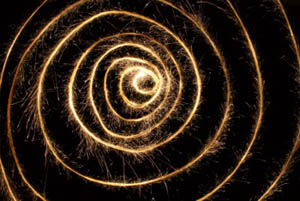 reveal a disappointingly shallow thinker who had lost his moorings in a sea of confusing and contradictory panaceas, grasping at Christianity in the desperate hope of finding some answer—any answer—to the modern dilemma. If Eliot truly converted to Christianity but did not infuse his work with his beliefs, then he was, in the final analysis, a hypocritical and duplicitous poet.
reveal a disappointingly shallow thinker who had lost his moorings in a sea of confusing and contradictory panaceas, grasping at Christianity in the desperate hope of finding some answer—any answer—to the modern dilemma. If Eliot truly converted to Christianity but did not infuse his work with his beliefs, then he was, in the final analysis, a hypocritical and duplicitous poet.
Eastern and Western concepts of time are fundamentally different. The Eastern concept of time is circular—symbolized by the wheel or mandala—and the Western concept is linear. Since Four Quartets describes various cycles and since Eliot often utilizes Eastern cultural references, critics have made the connection with the circular mandala. However, I propose that the cycles seen in the “Quartets” represent a more linear, Western concept of time than is generally appreciated. In the Four Quartets, Eliot presents cycles repeating along a linear course, which in three dimensional space could be thought of as a focusing spiral, a concept analogous to the traditional, Western literary device of the seasons repeating their cycles in the context of advancing time: not the same as, but reminiscent of, Yeats’ widening gyre.
What is the fundamental philosophical difference between the mandala and the seasonal cycles? The Eastern wheel returns repeatedly upon itself, while the progressing element of the seasonal cycles allows for variance and newness to occur. Thus, the more linear concept of seasonal cycles reflects Eliot’s Christian theology (Eden -> sin -> fall -> birth -> death -> resurrection -> salvation ->conclusion), while the mandala, revolving upon itself, yields the solipsistic experience of continuous reincarnation.
It is with these differences in mind that we turn to the Four Quartets and the nature of Eliot’s view of time, as reflected, specifically, in “East Coker.” East Coker is the town to which Eliot’s family moved when they came to England from America, and it was in that same Somerset district that their ancestors had also lived. In Section I of the poem, the narrator associates himself with the past through family ancestry and through all of the generations in time (Weitz 60). The section begins “In my beginning is my end, “ and goes on to list all of the things that are either “removed” or “restored”: houses, open fields, factories, a bypass, fires, ashes, bones, leaves . . . and subsequent to the list, an Ecclesiastical placing of these events in time. Each creation or destruction is placed within its own framework:
Houses live and die: there is a time for building
And a time for living and for generation
And a time for the wind to break the loosened pane
And to shake the wainscot where the field mouse trots
And to shake the tattered arras woven with a silent motto. (I: 9-13)
By using the structure of Ecclesiastes’ “a time . . . ” to open the poem, Eliot conjures up the consciousness of the Western, Judaeo-Christian concept of time; it is ordered; it is both developmental and progressive in nature. The timber goes to the fire; the fire to the ashes, the ashes to earth; the earth is flesh, fur, feces. The ecological “chain” must move in orderly progression concluding at its starting point, the earth itself. Its cycle is a natural, empirical one, not a philosophical one. “In my beginning is my end” is signified not only through the narrator’s return to his ancestral home, but by the earth’s continual metamorphosis as it cycles, making “all things new.” In the end of Section I, the ancestors’ lives are also described in terms of Ecclesiastes, thus associating the narrator’s present visit with their past—they stand together as one experience:
. . . [K]eeping time,
Keeping the rhythm in their dancing
As in their living in the living season 
The time of the seasons and the constellations
The time of milking and the time of harvest
The time of the coupling of a man and woman
And that of beasts. Feet rising and falling,
Eating and drinking, Dung and death. (I: 40-47)
In the second stanza we see the thesis: “In my beginning is my end” gather into itself the future. If time makes all things temporary, changing and metamorphosing them, the future is part of that; the future is actually integral to the present and the past:
In a warm haze the sultry heat
Is absorbed not refracted, by grey stone. (I: 20-21)
Just as the light is absorbed, not refracted, so the experiences of the past and present are melded into the events of the future. All earthly experiences will disappear, but as Eliot makes clear in “Burnt Norton,” the foundational poem of the set, there is found in the midst of it a “still point of the turning world.” This still, permanent point, the Word of God, the Logos made flesh in Christ (V in “Burnt Norton”) is the eternal, unchanging locus about which all other events, past, present and future, revolve, and in which they are actually contained: “The grass withers, the flower fades, but the Word of the Lord endures forever” (Isaiah 40:8).
Section I Ends:
. . . Dawn points, and another day
Prepares for heat and silence. Out at seas the dawn wind
Wrinkles and slides. I am here.
Or there, or elsewhere. In my beginning. (I: 48-51)
The dawn is “point”ing towards another day—time progresses—but it also points towards the narrator’s place “here . . . there or elsewhere. In my beginning.” As the new day dawns it brings a new time, but not a new identity. His beginning is also his end; he finds his being stable as he looks at himself in changing space and time, because is grounded by “the darkness of God”—that is, the overpowering, inexorable permanence of God (see II: 12-13).
The first strophe of Section II of “East Coker” is a contemplation of the seasons’ relationship to time:
What is the late November doing
With the disturbance of the spring
And the creatures of the summer heat,
And the snowdrops writhing under feet
And hollyhocks that aim too high
Red into grey and tumble down
Late roses filled with early snow? (I: 1-7)
While one critic sees this section as the seasons “cancel[ling] one another out rather than adding to a pattern” (Headings 127), I see the section as describing the tension between the seasons as a framework upon which time eventually concludes in “that destructive fire”—most likely the end of time as described in the book of Revelation and other places in the New Testament.
November is in tension with spring–summer creatures with snowdrops–roses with snow—all pull against each other and press time along to its final conclusion of “destructive fire,” even as earlier, the dawn has pointed towards it. The essence of the world in time as it is now will eventually disappear. In Yeatsian terms, “The center cannot hold”; “The houses are all gone under the sea. / The dancers are all gone under the hill (II: 49-50). In other words, nothing which is only “in time” will stand, because time deceives—it causes us to think we have a larger , more encompassing knowledge than we do: “The knowledge imposes a pattern, and falsifies / For the pattern is new in every moment” (II: 34-35). Section II concludes with the only path for approaching God and thus, permanence and significance, ‘The only wisdom we can hope to acquire / Is the wisdom of humility; humility is endless” (II: 47-48).

Through humility one can attain eternal existence, because only through humility can the window be gained which will lead to knowledge of the Logos. But such self-abnegation is the hard road; one must, as Section III reveals, travel through the dark. The dark (the suffering God brings as the way to humility) will strip the soul of its pride and bring it to a place of recognizing the vanity of trying to discover any purpose outside of the context of the Logos. This process of developing humility occurs with an unfolding of time which reveals to the narrator the true insignificance of his own identity and existence in the universe and throughout time, as he looks back on all of time and imagines also the future.
This leads to the specifics of what it means to allow humility to have its way. At the end point are the qualities associated with the Logos itself, “But the faith and the love and the hope are all in the waiting.” In Section IV the Logos is symbolized in the person of a wounded surgeon, and the Church as a dying nurse (Headings 128)”:
The wounded surgeon plies the steel
That questions the distempered part;
beneath the bleeding hands we eel
The sharp compassion of the healer’s art
Resolving the enigma of the fever chart. (IV: 1-5)
Here the solution to impermanence is found: the deceived and the transitory state of mankind can be cured with healing through the Christ surgeon, by the Church, as is symbolized by Good Friday and Christ’s sacrificial death on that day (Headings 128). His sacrifice transcended time and covered the condition of mankind of all time—past, present and future—thus drawing together all of time and all people into one unit and given them a transcendent permanence and meaning. Thus the section concludes:
The dripping blood our only drink,
The bloody flesh our only food:
In spite of which we like to think
That we are sound, substantial flesh and blood–
Again, in spite of that, we call this Friday good. (IV: 21-25)
Section V is contemplative; the poem draws a distinctive conclusion, an end point viewed through age, as the narrator looks back over twenty years. He sees failure and hopelessness in frail human attempts at greatness along the way. But these years of living reveal the need for a “further union, a deeper communion” (35-36). His final conclusion can be termed as a kind of Christian existentialism: “For us, there is only the trying. The rest is not our business” (18); our human responsibility is to follow the way of humility and let God and the unfolding of time and eternity determine the rest. In the final analysis then, there is only this—a clinging to the unchanging Word: “The here and now cease to matter” (30) because eternity is seen as having the only lasting and overriding value. However, specific individual experiences in time lead toward that eternity; the distinctly temporal journey propels one forward into the ultimate reality of “union and communion” with God. The poem closes by turning its opening phrase, “In my end is my beginning,” because the narrator has realized that eternally speaking, he is no more (or less) now than he was at birth; he is only of significance in terms of the Word as both the Alpha and the Omega.
By using the theme of time and then proceeding to compress, expand and unify it throughout the work, Eliot has give us a poem of lasting value and spiritual significance; when placed with the other poems in the Four Quartets it presents a kind of brief “poetic epic,” revealing an inner journey of a soul’s awakening to and discovery of eternal and transcendent values.
Painting of The Wasteland via http://www.school-portal.co.uk
Sign up for our newsletter at integritasacademy.com for news and updates!
©Cindy C. Lange, MA








